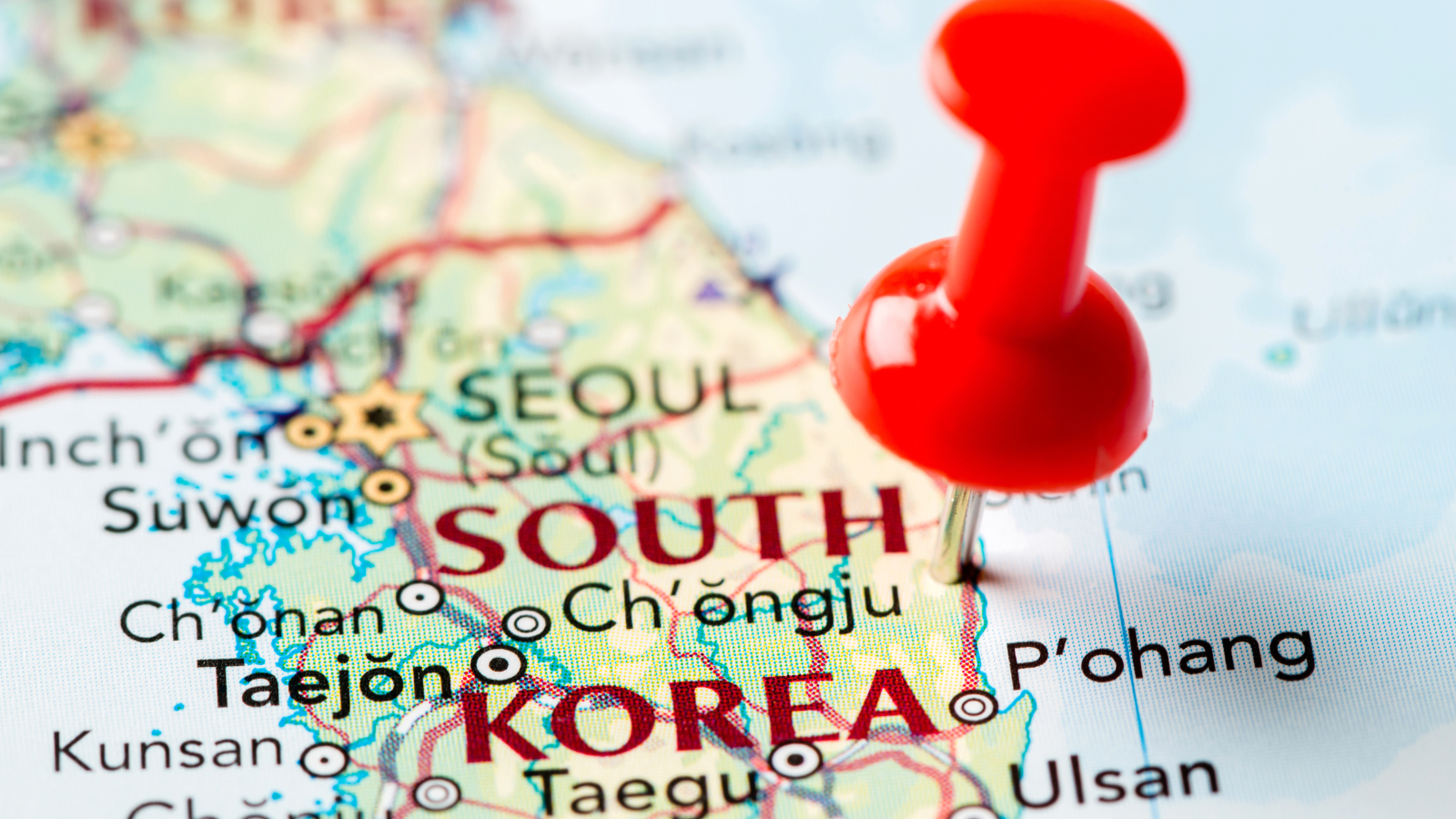
Top 5 Must-Visit Places in South Korea for Indian Travelers
South Korea, a country known for its rich cultural heritage, futuristic cities, and breathtaking landscapes, has increasingly become a popular travel destination for Indian travelers. Whether you’re a K-pop fan, a food lover, or a nature enthusiast, South Korea offers something for everyone. Here's a detailed guide on the top 5 places you must explore.
Seoul: The Dynamic Capital
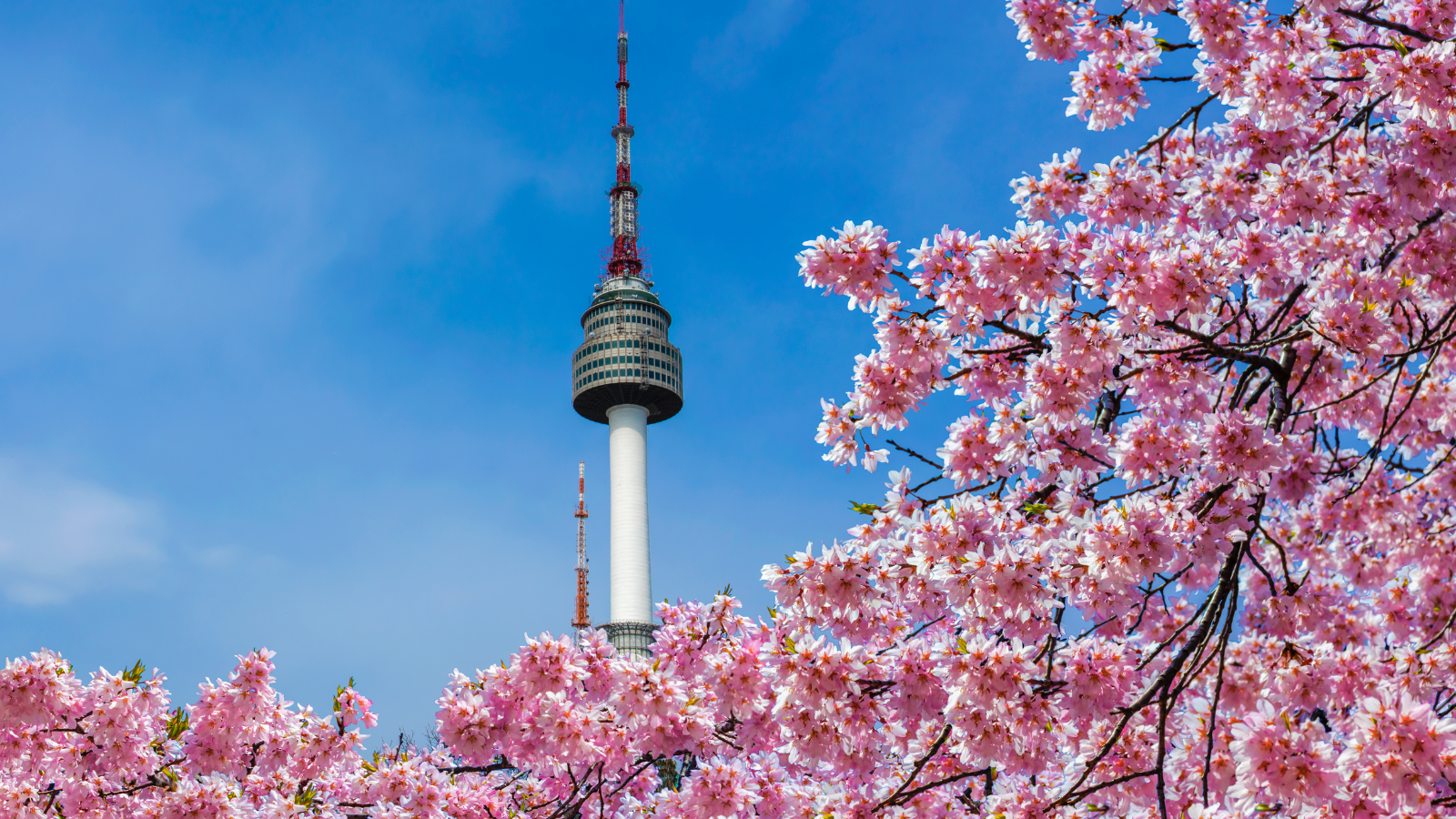
Seoul, the vibrant and dynamic heart of South Korea, is a city that masterfully intertwines tradition with cutting-edge modernity. It’s a place where ancient palaces coexist with futuristic skyscrapers, and where cultural experiences are as plentiful as the neon lights that illuminate its busy streets.
Must-Visit Spots in Seoul
- Gyeongbokgung Palace:
- Description: Step into Korea’s royal past at Gyeongbokgung Palace, the largest and most beautiful of Seoul’s Five Grand Palaces. Built in 1395, the palace stands as a testament to the grandeur of the Joseon Dynasty.
- Activities: Don traditional hanbok (Korean attire) and walk the palace grounds for an immersive experience. Make sure to catch the Changing of the Guard ceremony, a colorful display of tradition held at the main gate.
- Nearby Attractions: Visit the National Folk Museum of Korea, located within the palace complex, to learn more about Korean culture.
- Bukchon Hanok Village:
- Description: Nestled between Gyeongbokgung Palace, Changdeokgung Palace, and Jongmyo Shrine, Bukchon Hanok Village is a living museum of traditional Korean houses, called hanoks. The village's picturesque streets have served as a popular backdrop for Korean dramas.
- Activities: Take a leisurely stroll through narrow alleyways lined with well-preserved hanoks. You can also join traditional workshops, such as calligraphy and tea ceremonies, to gain a deeper appreciation of Korean culture.
Myeongdong:
- Description: Myeongdong is a bustling shopping district famous for its wide array of beauty products, fashion boutiques, and street food vendors. It’s a sensory wonderland where you can indulge in the latest Korean skincare trends and try a variety of local snacks.
- Must-Try Foods: Sample tteokbokki (spicy rice cakes), hotteok (sweet pancakes), kimbap (Korean sushi rolls), and odeng (fish cake skewers). There are also numerous cafes offering unique treats like bingsu (shaved ice dessert).
- Shopping Tips: Don’t forget to ask for tax refunds if you’re making large purchases. Many stores cater to tourists and provide guidance on how to claim your refund at the airport.
- N Seoul Tower:
- Description: Located atop Namsan Mountain, N Seoul Tower offers breathtaking panoramic views of the entire city. You can reach the tower by hiking, taking a bus, or riding a scenic cable car.
- Activities: Take in the stunning cityscape from the observation deck or enjoy a meal at the revolving restaurant. Couples can participate in the popular tradition of placing a love lock on the fence at the base of the tower, symbolizing their eternal love.
- Night View: Visiting the tower at night is especially magical, as Seoul’s skyline sparkles under the stars. The tower itself is beautifully lit in different colors, depending on the air quality that day.
Why Indian Travelers Will Love Seoul
- Indian Restaurants and Food Options: Seoul has a growing number of Indian restaurants catering to a variety of tastes. Places like Jyoti Indian Restaurant, Namaste, and Taj Palace serve authentic Indian dishes, from rich curries to fluffy naan bread. For vegetarian travelers, Indian cuisine options are plentiful, providing comfort and familiarity away from home.
- Vibrant Culture and Festivals: Indian travelers will appreciate Seoul’s lively street culture, traditional performances, and annual events like the Seoul Lantern Festival and the Bosingak Bell Ringing Ceremony on New Year's Eve.
- Shopping Galore: From luxury brands in Gangnam to affordable streetwear in Dongdaemun, Seoul’s shopping scene is a paradise for bargain hunters and trendsetters alike. The experience is similar to bustling markets in India, making Indian travelers feel right at home.
- Ease of Transportation: Seoul’s efficient and well-connected subway system makes exploring the city easy and budget-friendly. Metro announcements are available in multiple languages, including English, ensuring that international visitors have a hassle-free experience.
Additional Travel Tips for Indian Visitors
- SIM Cards and Internet: Stay connected with affordable data plans available at the airport. Renting a pocket Wi-Fi device is also a great option if you’re traveling in a group.
- Local Customs: Be respectful when visiting religious or historical sites. Remove your shoes when entering temples and homes, and always address elders politely.
- T-Money Card: Purchase a T-Money card for seamless access to buses, subways, and even convenience store purchases.
Busan: Beaches and Temples:
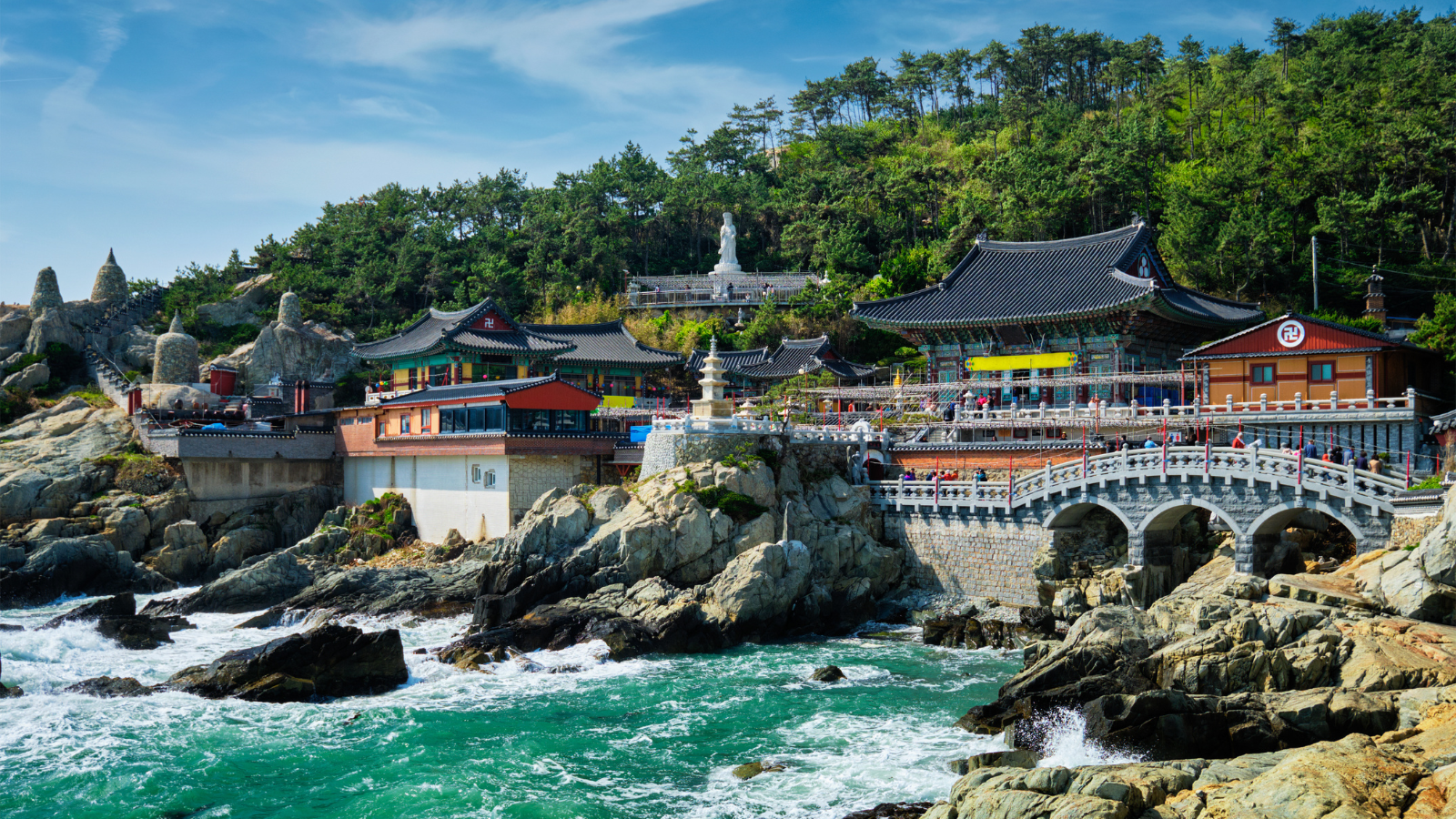
Busan is a dynamic city that blends modernity with tradition, making it an appealing destination for Indian travelers. Here's a deeper dive into some of the key attractions and experiences in the city:
1. Haeundae Beach
- What to Expect: Known for its expansive white sand, Haeundae Beach is one of Korea’s most famous beaches. It’s ideal for swimming, beach sports, or simply soaking up the sun. In the summer, it becomes a lively hub of activity, with beachgoers, food stalls, and music festivals. The beach is also surrounded by luxury hotels and restaurants, perfect for those looking to relax after a day in the sun.
- For Indian Travelers: The beach has plenty of vegetarian-friendly options at nearby restaurants, and Indian-style resorts or hotels may also offer familiar comforts. The beach vibe, along with the scenic sunset views, will appeal to those looking for a coastal escape.
2. Gamcheon Culture Village
- What to Expect: Often called the "Santorini of Busan," Gamcheon Culture Village is a colorful and artistic area with narrow, winding streets filled with brightly painted houses. The village has transformed from a slum area into a vibrant arts district, where you’ll find murals, sculptures, and unique art galleries. It's a great spot for photography and exploring quirky local cafes.
- For Indian Travelers: The village offers an immersive cultural experience. Indian travelers will find the fusion of local Korean art with global artistic influences intriguing. While it may be a bit different from India’s traditional architecture, the colorful surroundings create a vibrant and welcoming atmosphere.
3. Jagalchi Fish Market
- What to Expect: Jagalchi is Korea’s largest seafood market and a must-visit for foodies. Here, you can experience the hustle and bustle of vendors selling live fish, shellfish, and other marine life. You can pick out your seafood and have it prepared fresh on the spot. For those who love seafood, this is a paradise.
- For Indian Travelers: While the market specializes in seafood, vegetarian Indian travelers can explore Korean vegetable-based dishes, including kimchi, japchae (stir-fried glass noodles), and banchan (side dishes). The market's vibrant atmosphere is perfect for those who enjoy cultural experiences.
4. Beomeosa Temple
- What to Expect: Located on the slopes of Mt. Geumjeong, Beomeosa Temple is a peaceful Buddhist temple founded in 678 AD. The temple complex is surrounded by lush forest and mountains, making it a serene retreat from the city. Visitors can explore the temple’s historical significance, Buddhist architecture, and tranquil nature paths.
- For Indian Travelers: The temple offers a peaceful spiritual experience, much like visiting India’s sacred temples. For Indian travelers familiar with the concept of Buddhist teachings, Beomeosa Temple provides a rich history to explore, with meditation or temple stays possible for those seeking a deeper connection.
Why Indian Travelers Will Love Busan
- Coastal Vibe: If you enjoy beach vacations, Busan offers a refreshing contrast to the hustle of urban life. Whether you're lounging at Haeundae or exploring the serene temples, the city offers diverse relaxation spots.
- Food and Cuisine: While seafood dominates Busan's culinary landscape, there are plenty of vegetarian-friendly options. Dishes like bibimbap (rice with mixed vegetables), kimchi, and tofu-based soups are popular and can be easily found in restaurants. Indian travelers might also appreciate the growing trend of international cuisine in the city.
- Cultural and Spiritual Retreats: For those interested in spirituality, the calm ambiance at Beomeosa Temple offers a retreat similar to Indian temples. Moreover, the traditional tea ceremonies and cultural festivals in Busan can also be a unique addition to the travel experience.
Best Time to Visit:
- Summer (June to August): Ideal for beach lovers. Haeundae Beach is at its most lively, with events and festivals.
- Autumn (September to November): Perfect for experiencing the temple's serene atmosphere and enjoying the fall foliage at Beomeosa Temple. The weather is also pleasant for exploring the city.
- Winter (December to February): While the temperatures drop, Busan offers a quieter, more peaceful experience, especially at temples.
Whether you’re a beach lover, a food enthusiast, or a culture seeker, Busan has something for everyone, making it an excellent choice for Indian travelers looking for an exciting and enriching holiday.
Jeju Island: Nature’s Paradise:
1. Hallasan National Park
- What to Expect: Hallasan, the highest mountain in South Korea, offers multiple hiking trails that lead you through lush forests, volcanic craters, and alpine meadows. The summit provides panoramic views of Jeju Island and the surrounding ocean, making it a popular spot for nature lovers and hikers. The park is also home to rare flora and fauna, with some trails offering a challenging yet rewarding experience.
- For Indian Travelers: Indian travelers who love trekking and nature will find the hiking trails of Hallasan both challenging and refreshing. The cooler temperatures and scenic vistas provide a great break from the hustle and bustle of city life, similar to trekking experiences in India’s Himalayan region. The serene atmosphere will appeal to those looking for peace and solitude in nature.
2. Jeongbang Waterfall
- What to Expect: Jeongbang Waterfall is one of the few waterfalls in the world that falls directly into the ocean. The waterfall is surrounded by rugged cliffs and lush greenery, creating a picturesque and peaceful atmosphere. Visitors can enjoy a walk down to the waterfall’s base, where they can feel the spray and take in the stunning view.
- For Indian Travelers: Jeongbang Waterfall offers a dramatic natural setting that may remind Indian travelers of some of the scenic waterfalls found in places like Kerala or the Western Ghats. The peaceful setting and the powerful sight of water cascading into the sea provide a perfect place for reflection and photography.
3. Manjanggul Cave
- What to Expect: Manjanggul Cave is one of the longest lava tubes in the world, stretching over 7.4 kilometers, though only a portion of it is open to the public. Walking through the cave, you’ll see stunning formations like lava stalactites, stalagmites, and lava columns. It’s an awe-inspiring journey through one of nature’s most fascinating geological wonders.
- For Indian Travelers: Geology enthusiasts and those curious about natural history will appreciate the unique formation of the cave. For Indian travelers familiar with cave temples or natural rock formations, Manjanggul Cave offers an intriguing look at the earth’s volcanic past. The experience is peaceful, educational, and visually captivating.
4. Seongsan Ilchulbong (Sunrise Peak)
- What to Expect: Seongsan Ilchulbong, also known as Sunrise Peak, is a UNESCO World Heritage site. This volcanic tuff cone rises sharply from the ground and offers one of the best spots on Jeju Island to catch a spectacular sunrise. The climb to the top is short but steep, and once you reach the summit, you’ll be rewarded with breathtaking views of the island, the sea, and the surrounding landscape.
- For Indian Travelers: The sunrise experience at Seongsan Ilchulbong can be quite similar to visiting sacred places in India for sunrise, like the ghats of Varanasi or the Himalayas. For Indian travelers, the serene atmosphere, along with the spiritual calmness that comes with watching the sun rise over a peaceful landscape, will evoke feelings of awe and tranquility.
Why Indian Travelers Will Love Jeju
- Diverse Landscape: Jeju Island offers a unique blend of beaches, mountains, waterfalls, and caves. Indian travelers will appreciate the diversity of activities on the island, ranging from peaceful hikes to relaxing on the beach or exploring caves. The variety of experiences makes Jeju an ideal destination for those seeking adventure and serenity in one trip.
- Escape from City Life: Jeju’s slower pace of life offers a welcome contrast to the fast-paced city environments many Indian travelers are accustomed to. Whether you are relaxing by the beach or exploring the lush forests, the island provides a peaceful retreat, much like India’s quieter hill stations or coastal towns.
- Cultural and Spiritual Connection: The natural beauty of Jeju is deeply intertwined with the island's cultural and spiritual significance. Indian travelers will enjoy the opportunity to connect with nature in a way that mirrors the importance of natural settings in Indian spirituality. Temples, natural reserves, and serene spots like Sunrise Peak offer a chance for reflection, much like sacred sites across India.
Best Time to Visit:
- Spring (March to May): This is one of the best times to visit Jeju, as the weather is mild, and the island is covered in beautiful flowers like cherry blossoms and canola flowers.
- Summer (June to August): The summer months are great for beach activities and water sports. However, it can get hot, so it's advisable to visit the higher altitudes for cooler weather.
- Autumn (September to November): With the fall foliage adding vibrant colors to the island's scenery, this is an excellent time for hiking and outdoor activities.
- Winter (December to February): Though colder, winter in Jeju is quieter and offers a more peaceful experience, especially at temples and scenic spots.
Why Jeju is Ideal for Indian Travelers:
Jeju offers an exciting combination of adventure, natural beauty, and cultural experiences that cater to a variety of interests. Whether you’re looking for hiking adventures, relaxing beach days, or cultural exploration, Jeju provides a tranquil escape that is both refreshing and enriching. The island’s slower pace also gives Indian travelers the opportunity to unwind and reconnect with nature, making it a perfect holiday destination.
Gyeongju: The Ancient Capital:
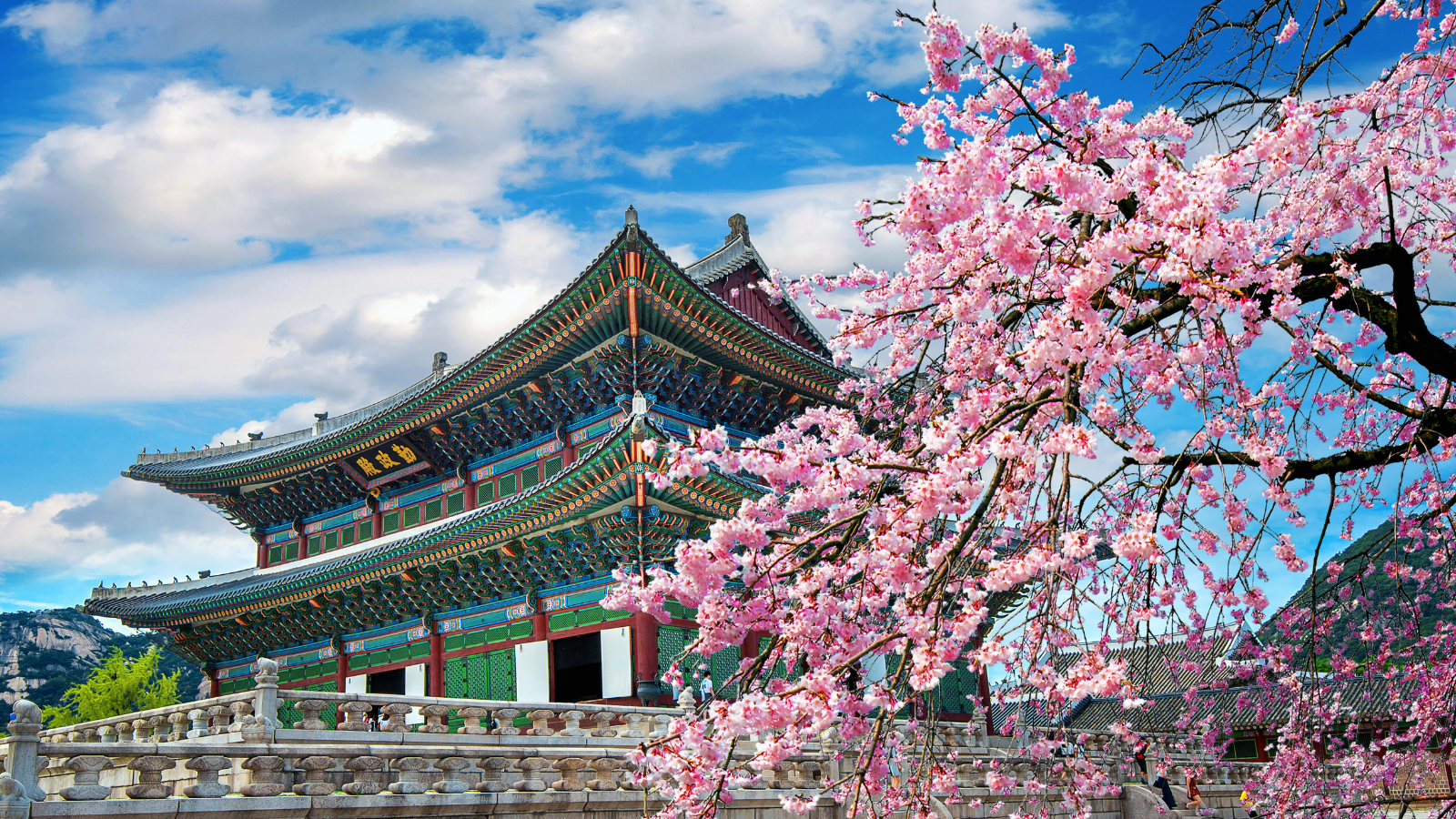
Gyeongju, often referred to as the "Museum Without Walls," is a treasure trove of history and culture, offering a unique experience for those keen on learning about Korea’s ancient past. With its deep connection to the Silla Dynasty, which ruled from 57 BCE to 935 CE, Gyeongju serves as the perfect destination for history buffs, spiritual seekers, and those looking for a tranquil escape. Here’s a deeper look at what makes Gyeongju a must-visit and why Indian travelers will particularly enjoy the city.
1. Bulguksa Temple
- What to Expect: Bulguksa is one of Korea’s most iconic and important Buddhist temples, a UNESCO World Heritage Site. The temple features stunning architecture, intricate carvings, and serene surroundings. Visitors can admire its grand halls, including Dabotap and Seokgatap pagodas, and explore the tranquil gardens and surrounding forest areas. The temple represents the pinnacle of Silla-era art and architecture and is a peaceful spot for reflection and meditation.
- For Indian Travelers: The spiritual atmosphere of Bulguksa Temple will resonate with Indian travelers familiar with the importance of temple visits in Hinduism and Buddhism. The temple’s deep spiritual history offers a connection to Buddhist practices, similar to India’s sacred sites like Bodh Gaya. The sense of serenity and architectural beauty will be deeply fulfilling for those who appreciate historical and spiritual landmarks.
2. Seokguram Grotto
- What to Expect: Situated on the slopes of Mount Tohamsan, Seokguram Grotto is another UNESCO World Heritage Site and is famous for its intricate stone carvings of a seated Buddha. The grotto offers a serene atmosphere, with the Buddha figure gazing toward the sea, representing peace and enlightenment. The intricate carvings and the tranquil surroundings make it a powerful place for reflection and understanding Korean Buddhism.
- For Indian Travelers: The stone Buddha at Seokguram Grotto is a magnificent example of Buddhist art, much like India’s Ajanta and Ellora caves. Indian travelers will find the spiritual ambiance of the site striking, as the importance of Buddha and his teachings is integral to both Indian and Korean cultures. The grotto provides a sense of peace, similar to visiting sacred Buddhist sites in India.
3. Cheomseongdae Observatory
- What to Expect: Built in the 7th century during the Silla Dynasty, Cheomseongdae is the oldest surviving astronomical observatory in Asia. This stone tower, about 9 meters tall, was used to observe the stars and is an architectural marvel that blends scientific knowledge with artistic design. The observatory is set in a peaceful park where visitors can reflect on the ancient Silla people’s understanding of the cosmos.
- For Indian Travelers: The observatory’s connection to astronomy will appeal to Indian travelers who are familiar with India’s own rich history of astronomy and mathematics. The scientific spirit of Cheomseongdae aligns with India’s historical contributions to astronomy, such as the observatories in Jaipur or the ancient text, the Surya Siddhanta. For travelers with an interest in the cosmos, this site offers a deep historical context.
4. Gyeongju National Museum
- What to Expect: The Gyeongju National Museum is home to an extensive collection of artifacts from the Silla Dynasty, including royal treasures, pottery, and Buddhist relics. The museum showcases the rich cultural and artistic achievements of the Silla Kingdom, offering visitors a deep dive into the ancient civilization’s daily life, royal history, and art. Exhibits include intricately designed gold crowns, ancient sculptures, and beautiful pottery that highlight Silla’s sophisticated craftsmanship.
- For Indian Travelers: History and culture enthusiasts will enjoy the Gyeongju National Museum’s fascinating exhibits. Indian travelers, with their own rich cultural heritage, will appreciate the parallels between ancient Korean and Indian civilizations, especially in terms of artistic expression and spiritual themes. The museum offers insights into the art, culture, and philosophy that defined an ancient kingdom, similar to India’s own rich historical museums like the National Museum in New Delhi.
Why Indian Travelers Will Love Gyeongju:
- Spiritual and Cultural Significance: Gyeongju offers a deep connection to Korean Buddhism, ancient architecture, and the Silla Kingdom’s cultural roots. For Indian travelers, especially those interested in spiritual journeys or cultural exploration, Gyeongju offers a profound sense of history and serenity. The city’s temples, grottos, and ancient structures provide opportunities for meditation, reflection, and a deep understanding of East Asian Buddhist culture, making it perfect for those seeking spiritual retreats.
- Connection to Ancient History: The richness of Gyeongju’s historical sites and museums will fascinate Indian travelers who have an interest in ancient civilizations and cultures. The city’s status as the capital of the Silla Kingdom makes it a must-visit for anyone looking to understand Korea’s past. The ancient ruins, combined with artifacts from the Silla Dynasty, offer an enriching experience for history enthusiasts.
- Tranquil Atmosphere: Gyeongju is a city that offers a slower pace of life compared to Korea’s bustling metropolises like Seoul. Indian travelers who enjoy peaceful getaways will find Gyeongju’s serene surroundings and spiritual sites deeply relaxing and grounding. The city is perfect for those who wish to escape the busy urban life and reconnect with nature and history.
Best Time to Visit:
- Spring (March to May): This is one of the best times to visit Gyeongju, as the weather is mild, and the cherry blossoms and other spring flowers create a picturesque backdrop for the city’s historical landmarks.
- Autumn (September to November): Gyeongju’s fall foliage enhances the beauty of the temples and ancient ruins, making autumn an ideal time for exploring the city. The weather is also pleasant for outdoor activities and sightseeing.
- Winter (December to February): Winter is quieter in Gyeongju, and while it can be cold, the peaceful atmosphere of the temples and historical sites can provide a reflective and serene experience.
Why Gyeongju is Ideal for Indian Travelers:
Gyeongju offers an enriching cultural and spiritual journey that aligns with India’s deep-rooted connection to history and spirituality. With its impressive historical sites, Buddhist temples, and peaceful atmosphere, the city is perfect for Indian travelers seeking a balance of reflection, adventure, and cultural immersion. Whether you’re a history enthusiast, a spiritual traveler, or someone interested in exploring Korea’s ancient past, Gyeongju provides a fulfilling and educational experience.
Incheon: The Gateway to South Korea:
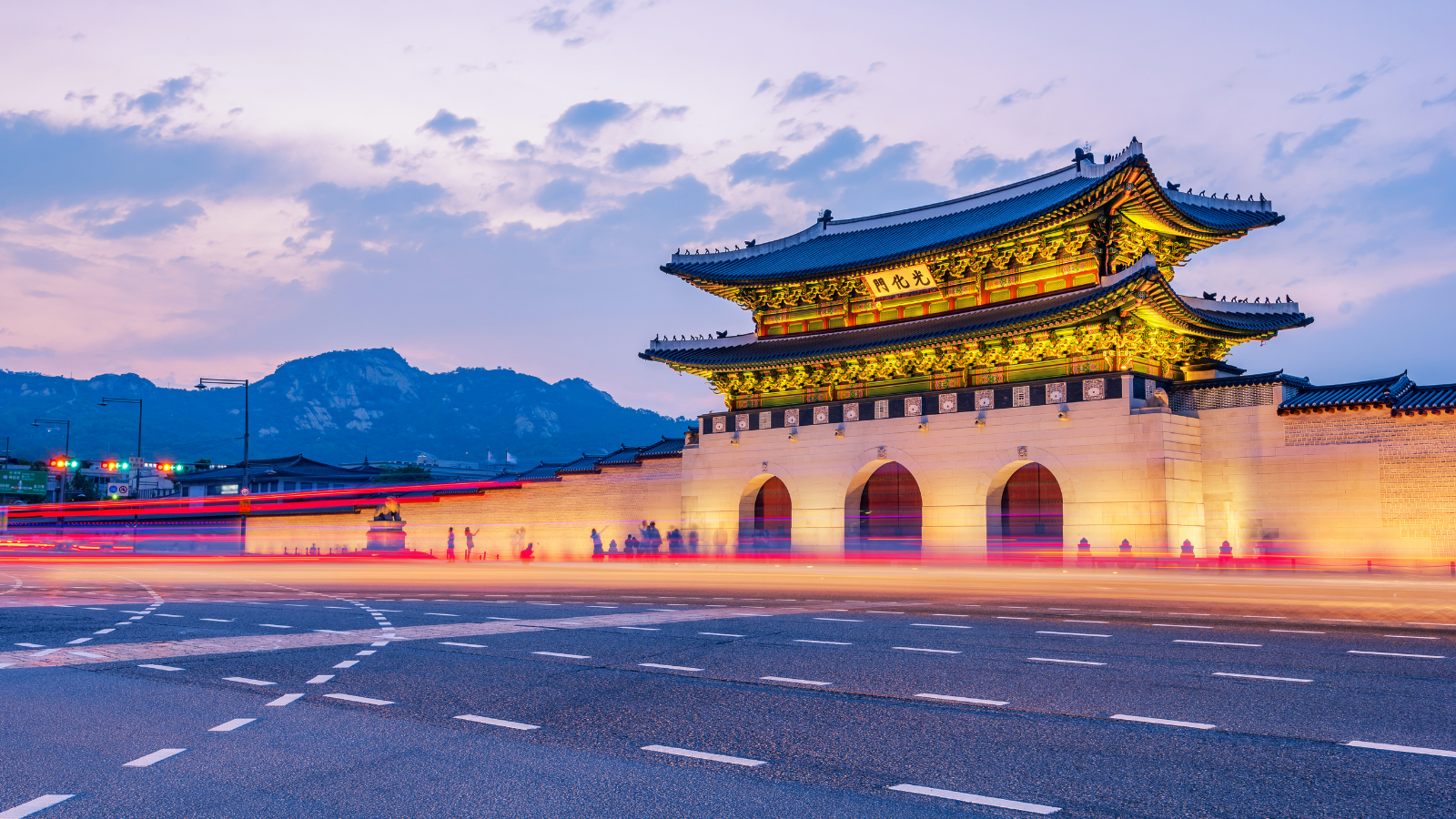
Incheon, often overlooked in favor of larger cities like Seoul, offers a unique blend of modern urban development and rich cultural history. As South Korea's third-largest city, Incheon serves as a gateway to the country, primarily due to Incheon International Airport, but it also boasts a variety of attractions that make it a destination worth exploring. The city features futuristic urban spaces, peaceful parks, and charming historical districts, making it an appealing destination for both relaxation and cultural exploration.
Here’s a more detailed look at Incheon’s must-see attractions and why Indian travelers will enjoy the city:
1. Songdo Central Park
- What to Expect: Located in the heart of Songdo, a modern district built with sustainability in mind, Songdo Central Park is an eco-friendly urban park that beautifully combines nature and futuristic design. Visitors can stroll along tree-lined paths, rent kayaks to paddle on the park’s man-made canal, or simply relax in the park’s lush green areas surrounded by impressive skyscrapers. The park’s serene atmosphere makes it perfect for unwinding or enjoying outdoor activities.
- For Indian Travelers: Songdo Central Park will appeal to Indian travelers who are accustomed to India’s urban landscapes, offering a refreshing contrast with its emphasis on green space, clean surroundings, and modern architecture. The park’s mix of nature and technology provides a fascinating look at South Korea’s urban planning and environmental consciousness, something that can be both interesting and relaxing for travelers seeking both nature and innovation.
2. Incheon Chinatown
- What to Expect: Incheon Chinatown is a vibrant area that reflects the city’s long-standing connection with Chinese immigrants. The district is home to unique Chinese-Korean fusion cuisine, and visitors can explore the colorful streets lined with Chinese-style architecture. A must-try dish here is jjajangmyeon, a popular Korean-Chinese dish made with black bean paste noodles. The area is also rich in cultural heritage, with old temples and markets offering a glimpse into Incheon’s multicultural roots.
- For Indian Travelers: Indian travelers will find Incheon Chinatown a fascinating place to explore, as it offers a combination of history and culture that mirrors the multicultural influences seen in India. The opportunity to taste jjajangmyeon and other Chinese-Korean dishes provides a culinary experience that is likely to resonate with those who enjoy diverse cuisines. Additionally, the fusion of Chinese and Korean elements in the architecture and atmosphere offers an interesting cultural experience.
3. Wolmido Island
- What to Expect: Wolmido Island, located near Incheon’s waterfront, is a popular leisure spot offering a range of attractions. Visitors can enjoy a stroll along the scenic boardwalk, visit the amusement park with thrilling rides, or relax at the waterfront cafes offering beautiful views of the sea. The island has a lively atmosphere, especially in the evening when the lights from the amusement park and cafes create a festive ambiance.
- For Indian Travelers: Wolmido Island offers a refreshing experience, especially for those traveling with family or friends. The amusement park will be a fun option for Indian families or those traveling with children, while the scenic cafes and boardwalk provide a relaxing atmosphere for those looking to unwind. The island’s coastal vibe also appeals to those familiar with seaside resorts in India, such as Goa or Kerala, offering similar beachside relaxation.
4. Incheon Grand Park
- What to Expect: Incheon Grand Park is a vast and expansive green space that includes walking paths, bike trails, lakes, and mountain views. It is a perfect location for outdoor activities like picnics, cycling, or leisurely walks. The park also has a botanical garden and a zoo, making it an ideal spot for families or nature enthusiasts looking to escape the city’s hustle and bustle.
- For Indian Travelers: Incheon Grand Park’s natural beauty will appeal to Indian travelers who enjoy outdoor activities, much like India’s national parks or gardens. The park’s size and peaceful atmosphere are perfect for those seeking a quiet day of relaxation in nature. Additionally, the botanical gardens and zoo provide an opportunity to connect with nature in a more leisurely way, similar to experiences in India’s well-known green spaces like the Lalbagh Botanical Garden in Bangalore.
Why Indian Travelers Will Love Incheon
- Blend of Modernity and Tradition: Incheon offers a unique combination of futuristic urban spaces and historical districts. Indian travelers will appreciate the city’s vibrant energy and modernity, along with its historical charm, particularly in areas like Chinatown. The contrast between sleek, modern buildings and traditional streets will remind Indian travelers of cities like Mumbai or Delhi, where old and new coexist harmoniously.
- Convenient Location: Incheon is often the first stop for international travelers arriving in South Korea, with the Incheon International Airport being one of the busiest airports in the world. Its proximity to Seoul (only about 45 minutes by train) makes it a convenient base for exploring the capital while also offering the chance to experience a more relaxed city atmosphere.
- Cultural and Culinary Delights: With attractions like Chinatown, Incheon is an ideal city for those interested in culinary experiences. Indian travelers who enjoy food will find plenty to explore in Incheon, from local street food to traditional Korean dishes. The chance to try jjajangmyeon and other fusion foods will be a unique addition to any South Korean food journey.
- Relaxing Atmosphere: Incheon’s numerous parks, waterfronts, and green spaces provide an excellent opportunity for relaxation, making it ideal for those looking to unwind. The city’s slower pace, compared to Seoul, offers a much-needed respite for travelers who want to enjoy a more peaceful, less chaotic experience.
Best Time to Visit:
- Spring (March to May): With mild weather and blooming flowers, spring is an excellent time to explore the city’s parks and outdoor attractions.
- Summer (June to August): The summer months are lively, particularly at places like Wolmido Island, where tourists can enjoy the amusement parks and waterfront cafes.
- Autumn (September to November): Autumn brings cooler temperatures and vibrant fall foliage, making it perfect for outdoor activities in places like Incheon Grand Park and Songdo Central Park.
- Winter (December to February): Winter can be cold, but it offers a quieter experience for those who want to visit indoor attractions or enjoy the peaceful beauty of the parks and waterfronts.
Why Incheon is Ideal for Indian Travelers:
Incheon offers a peaceful, yet dynamic, introduction to South Korea that balances modernity and history. Its close proximity to Seoul makes it a perfect starting point for a South Korean adventure, while the city’s own charm with parks, beaches, and unique cultural districts provides a fulfilling experience. Whether you’re seeking relaxation, exploring new cuisines, or diving into the city’s historical roots, Incheon provides a diverse and enriching experience for Indian travelers.
Travel Tips for Indian Travelers:

1. Currency and Cash
- Currency: The official currency of South Korea is the South Korean Won (KRW). Coins come in denominations of ₩10, ₩50, ₩100, and ₩500, while bills include ₩1,000, ₩5,000, ₩10,000, and ₩50,000.
- Credit and Debit Cards: Credit cards are widely accepted in urban areas, including restaurants, hotels, and shopping malls. Visa and MasterCard are the most commonly accepted, but American Express and Discover might not be as widely used.
- When to Use Cash: It is advisable to carry some cash, especially when visiting:
- Street Markets: Places like Myeongdong Night Market or traditional markets like Gwangjang Market prefer cash transactions.
- Local Eateries and Cafes: Some small eateries or food stalls may not accept cards.
- Rural Areas: In smaller towns and rural areas, having cash on hand is essential.
- Currency Exchange: You can exchange money at Incheon Airport, banks, and authorized exchange counters. Currency exchange booths in popular areas like Myeongdong often offer better rates. ATMs that support international cards are common, but ensure your card is authorized for overseas transactions.
2. Language and Communication
- Language: The primary language spoken in South Korea is Korean. While English is taught in schools, it is not commonly spoken in everyday conversations, especially among older generations.
- Tourist Areas: Major tourist spots like Seoul, Busan, and Jeju Island have signs and information in English, and staff at major attractions and hotels usually speak basic English.
- Learning Basic Phrases: Knowing some simple Korean phrases will go a long way in making your trip smoother and more enjoyable. Here are some essential ones:
- Hello: Annyeonghaseyo (안녕하세요)
- Thank you: Gamsahamnida (감사합니다)
- How much is this?: Eolmaeyo? (얼마예요?)
- Where is the bathroom?: Hwajangsil eodi eyo? (화장실 어디에요?)
- Translation Apps: Download apps like Google Translate or Papago to help with translations. These apps have voice and photo translation features that are handy when reading menus or navigating.
3. Food and Dining
- Korean Cuisine: South Korean cuisine is known for its diverse flavors, often characterized by a mix of spicy, savory, and sweet tastes. Popular dishes include:
- Kimchi: A spicy fermented vegetable side dish, typically made from napa cabbage.
- Bulgogi: Marinated grilled beef with a sweet and savory flavor.
- Tteokbokki: Spicy rice cakes in a thick, fiery sauce.
- Bibimbap: A mixed rice dish with assorted vegetables, gochujang (red chili paste), and often an egg or meat topping.
- Vegetarian Options: Although Korean cuisine is not heavily vegetarian, there are still delicious meat-free options, such as:
- Bibimbap (order it without meat)
- Gimbap (Korean-style sushi rolls; opt for vegetable or egg fillings)
- Pajeon (savory vegetable pancakes)
- Tofu Soup: Mild versions are available, though ensure it doesn’t contain seafood broth.
- Indian Food: There are several Indian restaurants in cities like Seoul and Busan. Popular choices include Jyoti Indian Restaurant in Itaewon, Namaste in Hongdae, and Ganga in Gangnam. These restaurants serve classic Indian dishes, such as butter chicken, paneer tikka, and naan.
- Dining Tips:
- Spicy Food: Korean food can be very spicy, so ask for a less spicy version if needed. The phrase "an maepge haejuseyo" (안 맵게 해주세요) means "Please make it not spicy."
- Chopstick Etiquette: Avoid sticking chopsticks upright into your food, as this resembles a funeral ritual.
4. Transportation in South Korea
- Public Transportation: South Korea boasts one of the world's best public transportation systems, which includes subways, buses, and trains.
- Subways: The subway networks in cities like Seoul, Busan, and Daegu are clean, efficient, and well-connected. Maps and station signs are available in English.
- Buses: Buses are an economical way to travel both within cities and between regions. While city buses have English announcements, it’s helpful to know the name of your stop in Korean.
- Korea Tour Card: This is a special transit card for tourists that offers discounts on transportation, attractions, shopping, and dining. You can use it on subways, buses, and even for taxi fares.
- KTX (Korea Train Express): The high-speed KTX train is ideal for traveling long distances quickly, like from Seoul to Busan. Book tickets in advance for cheaper rates.
- Taxis: Taxis are reasonably priced, but it’s best to show your destination in Korean. Apps like Kakao Taxi are user-friendly for non-Korean speakers.
- Rental Options: If you prefer flexibility, consider renting a car. This is particularly useful on Jeju Island or for exploring rural areas. Remember to carry an International Driving Permit (IDP).
FAQs:
- What is the best time to visit South Korea?
- The best times are during spring (April-June) and autumn (September-November) when the weather is pleasant, and the landscapes are breathtaking.
- Do Indian travelers need a visa for South Korea?
- Yes, Indian travelers need a visa. Apply in advance and ensure you have all required documents, such as proof of accommodation and financial stability.
- Is vegetarian food available in South Korea?
- Yes, although it’s limited. Many restaurants in cities like Seoul and Busan offer vegetarian options, and Indian restaurants are also available.
- How expensive is traveling in South Korea?
- Costs can vary, but budget travelers can expect to spend around ₹3,500-₹6,000 per day on accommodation, food, and local transportation.
- Is South Korea safe for solo travelers?
- Absolutely! South Korea is considered one of the safest countries. Just exercise basic precautions and be cautious in crowded places.
- What is the local currency, and where can I exchange money?
- The currency is the South Korean Won (KRW). Exchange money at airports, banks, or use ATMs. Major credit cards are widely accepted.
- Are there any cultural etiquettes Indian travelers should be aware of?
- Yes, bow as a greeting, remove your shoes before entering homes, and be respectful in temples. Tipping is not customary in South Korea.
- Can I use my Indian phone in South Korea?
- If your phone is unlocked, you can buy a local SIM card or rent a portable Wi-Fi device at the airport.
- How do I stay connected to the internet?
- Free Wi-Fi is common in major cities, and you can also rent portable Wi-Fi devices or buy prepaid SIM cards.
- What are some must-try Korean foods for Indian travelers?
- Try kimchi, Korean barbecue, tteokbokki, and ramyeon. Many dishes can be adjusted for spiciness, catering to Indian palates.
Conclusion:
South Korea’s diverse offerings, from its high-tech cities to serene islands, make it a fantastic destination for Indian travelers. Whether you’re into historical exploration or natural beauty, these five places will provide unforgettable experiences. Start planning your adventure, and immerse yourself in the wonders of South Korea!






